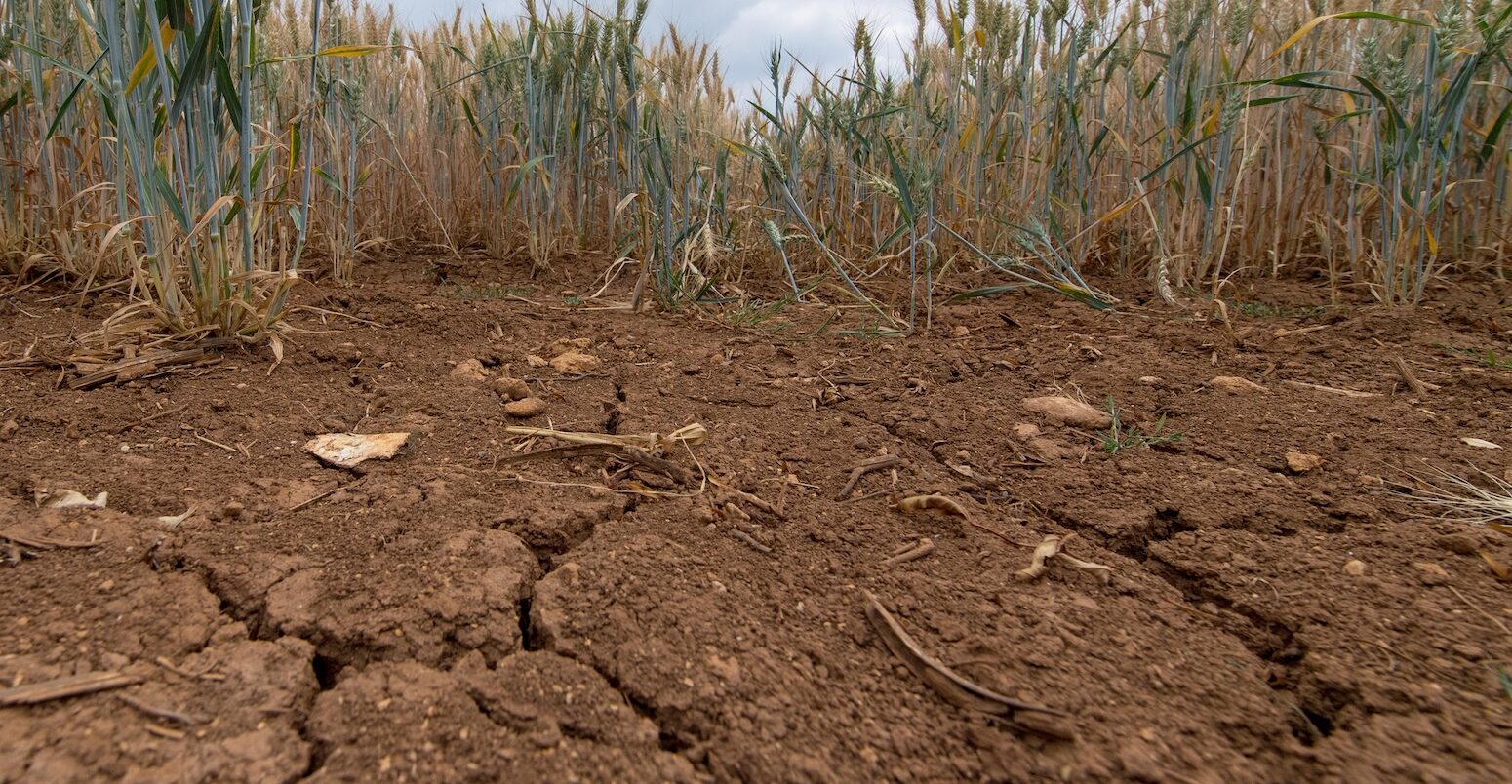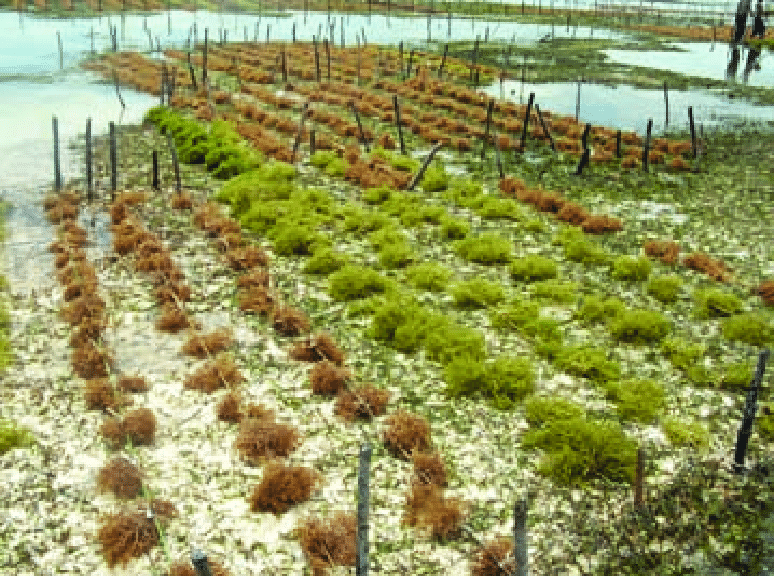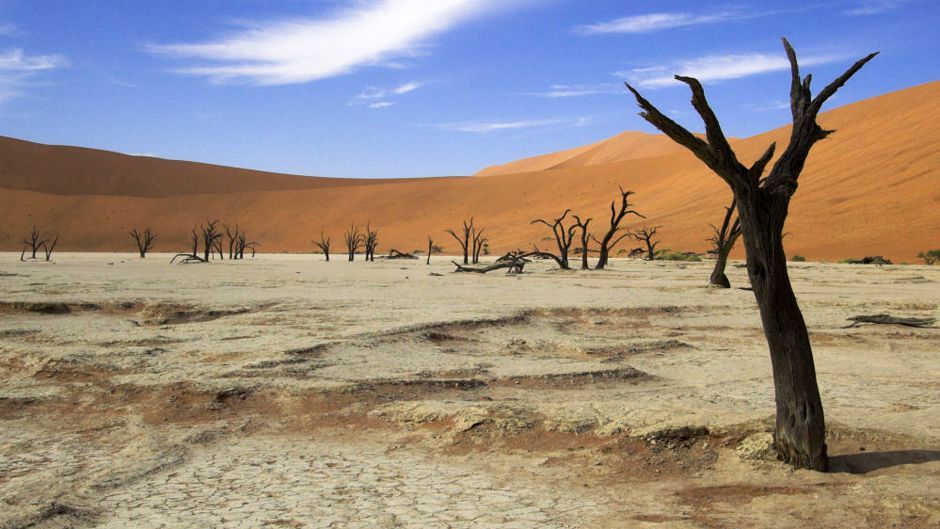A new commentary piece in Nature argues that the much-cited claim that Indigenous peoples protect 80% of the world’s remaining biodiversity is not only baseless, but wrong.
Although scientists and Indigenous advocates agree the statistic is under-researched, not all agree with the authors’ conclusions, especially as they did not provide evidence that suggests the statistic is wrong nor provide alternative ways of estimating biodiversity conservation on Indigenous lands.
Scientists share their ideas and insights on calculating biodiversity on Indigenous lands, including the complexities of such research and what to avoid in the future to maintain scientific rigor.
Indigenous advocates say the Nature commentary is unethical as it makes conclusions without enough evidence and undermines Indigenous guardianship of biodiversity, their land rights and access to funding ahead of the upcoming U.N. biodiversity conference.
A new commentary piece in the journal Nature has caused an uproar in the conservation world and has prompted scientists to call for rigorous study.
According to the authors, the much-cited claim that 80% of the world’s remaining biodiversity is protected by Indigenous peoples is not only a “baseless statistic” that is not supported by any real data — it’s wrong. Mentioning the impossibility of quantifying biodiversity and the lack of studies that produced the statistic, the researchers show how multiple peer-reviewed journal articles and media (including this one) cited the figure.
“Maintaining accuracy and integrity is crucial for advancing social advocacy. Failing to correct errors, no matter how inconvenient, only serves to perpetuate disinformation,” says Álvaro Fernández-Llamazares, one of the authors. “This runs contrary to the tenets of scientific rigor.”
But not all researchers agree with the authors’ conclusions, and many Indigenous activists call the commentary unethical. Although nearly all sources Mongabay spoke to agree the statistic is under-researched, and certain NGOs have long avoided using the figure, some say the Nature commentary itself lacks real evidence. According to scientific principles, they say, it’s still incorrect to point to the 80% stat as wrong without providing proof it’s wrong. This is especially true as many peer-reviewed studies point to Indigenous stewardship of high-value biodiversity areas.
“Although the 80% statistic is not well evidenced, it does not mean it’s not true,” says Drea Burbank, CEO of the fair-trade biodiversity credits business Savimbo.
Publishing the commentary without proof, Indigenous advocates tell Mongabay, undermines Indigenous guardianship of biodiversity and needlessly jeopardizes their land rights ahead of the upcoming U.N. biodiversity conference.
But how can scientists calculate the actual number? And, following the authors’ conclusions on biodiversity, is it even possible to calculate this figure?
Yes, say most researchers Mongabay spoke with, and some are looking forward to it — though in different forms.
“I think a better paper would have been to highlight this [discrepancy] and then to offer various different ways to estimate the importance of Indigenous lands for biodiversity,” says Jonathan Green, senior researcher at SEI York who focuses on conservation science.
But the issue, scientists and policy experts tell Mongabay, is down to data discrepancy. To come up with the true number, researchers would need two data layers: biodiversity density and Indigenous lands. Both are complex information to gather and analyze for their own reasons.
It’s possible, scientists say, but difficult and imperfect.

Beyond calculable numbers, Indigenous advocates also say any assessment will offer but a snapshot of their stewardship of life on Earth, its species and their spiritual ties to the land. Fernando Lezama, Pijao tribal leader and co-founder of Savimbo, says many Indigenous sites in the Amazon and Ecuador have long protected the rarest species, including a species of wild canine they have not found possible to study or gather data on.
“We have other rare animals that we haven’t been able to capture yet, but we know that some animals exist and that are not yet written in the books of science,” he tells Mongabay.
Can we quantify biodiversity?
A few years ago, Fernández-Llamazares intended to use the 80% figure in a scientific article of his. “But when I tried to fact-check it, I was unable to find any solid source. The deeper I dug into it, the clearer it became that the figure was unsubstantiated,” he says.
To check the claim, the authors of the Nature piece searched decades of literature. The earliest potential source for the 80% statistic is in the 2001 edition of the Encyclopedia of Biodiversity. Three reports cite this publication, including a report by the U.N. Food and Agriculture Organization (FAO). According to the report, “approximately 80 per cent of the world’s remaining biodiversity is found in Indigenous peoples’ territories.” However, the encyclopedia actually asserts that “nearly 80% of the terrestrial ecoregions are inhabited by one or more Indigenous peoples.”
In other words, the original statement and the analysis underpinning it merely quantified the proportion of the world’s 136 terrestrial ecoregions in which Indigenous peoples live.
Then, in 2002, the U.N. Commission on Sustainable Development stated that Indigenous peoples “nurture 80% of the world’s biodiversity on ancestral lands and territories.”
However, a 2008 World Bank report seemed to have contributed most to the figure’s widespread adoption in the academic literature. The report cited a 2005 publication by the global nonprofit World Resources Institute (WRI), which observed that seven Indigenous communities in the Philippines were “maintaining over 80 percent of the original high-biodiversity forest cover” — not a statement of global Indigenous biodiversity stewardship.
“Some social scientists call it an “immutable mobile” — i.e., an apparent fact that is used by different people all over the world without questioning,” says Tim Forsyth, a professor of environment and development at the London School of Economics and Political Science who focuses on understanding contested science. “That in itself is a course of concern.”
He says the continued use of the stat comes from assumptions about Indigenous peoples that are too narrow and essentialist about their relationship with nature. “[It] reflects an interest in Indigenous people that only serves the agenda of protecting biodiversity,” he tells Mongabay, reducing our attention to Indigenous rights beyond this generalization.

While he says many studies show we have much to learn from Indigenous people’s traditional ecological knowledge and their conservation of ecosystems, some communities also actively take part in activities destroying biodiversity, and many cultures are changing within the younger generations.
But, according to Burbank, Savimbo continued to use the statistic after doing their own internal study. To do so, they overlapped maps of global territories and areas conserved by Indigenous peoples and local communities from the ICCA Consortium’s Territories of Life 2021 report, with the ranges of one of several existing data sets on biodiversity density, such as the 2024 study on the global distribution of plants used by humans.
A similar public study, scientists told Mongabay, should be done.
Although the Nature commentary bases its conclusion on the fact that biodiversity is unquantifiable, measuring biodiversity described by science is not such a big challenge, Burbank argues. Rather than emphasizing the fact that “we can’t measure biodiversity” because scientists have not yet described all species or it may be difficult to distinguish between species, she says focusing on described species, using species as proxies for biodiversity or innovating how we measure biodiversity should be the focus.
Several months before the commentary was published, Burbank approached the authors with this possibility of measuring biodiversity on Indigenous lands, but she says they didn’t respond to her email.
Researchers we spoke to, on the other hand, did say measuring biodiversity was a challenge but also disagreed with the Nature authors that it was impossible.
“There are all sorts of ways of measuring and mapping biodiversity — and species richness often isn’t the most useful in terms of conservation. Inevitably none capture all biodiversity, so all assessments come with caveats, but these kinds of assessments are central to the prioritization of conservation actions,” Green tells Mongabay.
Though imperfect for capturing all of biodiversity, scientists tell Mongabay that species on the IUCN Red List, key biodiversity areas (KBAs), ecoregions or the distribution of plants, wildlife and fungi can serve as proxies for calculating how much Indigenous peoples conserve.
To get a better sense of the biodiversity density that Indigenous peoples’ have long stewarded, Stuart Butchart, chief scientist at conservation NGO BirdLife International, says multiple parameters for biodiversity should be used. “Presenting the range of these numbers would give a more realistic assessment.”
In these ways, people are always publishing studies about biodiversity density globally, Burbank from Savimbo tells Mongabay. “But apparently, they have no interest in biodiversity density on Indigenous lands.”

Mapping Indigenous lands
Gathering accurate data on Indigenous lands is the other piece of the puzzle to estimate the percentage of biodiversity, though it is also complex.
According to David Kroeker-Maus, senior research associate of Rights and Resources Initiative’s land Tenure Tracking program, researchers could use key biodiversity areas as a proxies for biodiversity and compare the KBA database with maps of Indigenous lands. He proposes using land maps like LandMark, the best available global map of Indigenous and community lands, or maps used in a 2018 Nature study researchers often refer to.
But gathering accurate data on the precise location of Indigenous lands on a global scale is challenging, and both these maps have significant gaps, geographers tell Mongabay.
Researchers should use up-to-date data on Indigenous lands, including those that are not yet titled. States’ lack of recognition of ancestral lands, the absence of mapping Indigenous lands in country maps and unresolved land conflicts make it difficult to obtain accurate data on the full scope of all Indigenous lands.
So far, the 2018 study estimates Indigenous peoples manage or have tenure over at least 28% of the Earth’s lands. This figure suggests the true figure of biodiversity density on Indigenous lands could be much lower than 80%, Butchart says. However, perhaps not too low. One study suggests these same Indigenous lands have habitats of at least 60% of all terrestrial mammal species.
Some sources suggest that biodiversity loss in the last few decades since the 80% figure first appeared could also have lowered the number. A World Bank spokesperson tells Mongabay that in light of “advances in research, knowledge around biodiversity, Indigenous peoples’ lands and geospatial data over the past 16 years, we are phasing out our own use of the 80% statistic.”
And if scientists want to go beyond how much biodiversity is on Indigenous peoples’ lands to calculate how much biodiversity they actively conserve, it’s even more complex.
“Many Indigenous peoples’ land use paradigms do not have the same dichotomy between conserved land and productive land that is implicit in Western conservation planning,” Kroeker-Maus explains. “[And] even Indigenous lands that have not been explicitly demarcated as a conservation area are likely being conserved in the sense that they are being sustainably stewarded by the communities that use them.”
To estimate the amount of biodiversity actively protected by Indigenous peoples, researchers should also pull data and map all Indigenous protected areas, conserved customary lands, community forests, community credit projects and more, Indigenous advocates say. The ICCA Consortium’s 2021 report captures one aspect of Indigenous stewarded areas, but not all, and it also includes lands stewarded by non-Indigenous local communities.
“The most feasible approach would be to assess how much known biodiversity exists within mapped Indigenous lands and to use this as a baseline, focusing only on countries or regions where reliable data is available,” says Fabrice Dubertret, a geographer focused on mapping Indigenous lands and one of the founding members of LandMark, in an email. “Attempting to create a global estimate with precise results would be a chimera.”
It’s also likely to be inaccurate, he tells Mongabay. It might be more productive to focus on regional levels and use that to reveal meaningful trends in Indigenous biodiversity stewardship without compromising scientific rigor.
In the future, if people estimate or publish work on Indigenous biodiversity conservation, everyone must look more critically at how they generate that statistic, sources say.
“For what campaigning purposes — and with what costs to how we understand biodiversity or Indigenous people,” Forsyth says.
Regardless of the conflict over the exact figure, former U.N. special rapporteur on human rights and the environment David Boyd says that lands managed by Indigenous people are in better shape from an ecological perspective than lands managed by the state or privately owned lands. To strengthen their participation, recognizing and respecting Indigenous title to land is an important conservation strategy, Boyd says.
“There is also a compelling human rights argument that states must respect Indigenous rights when taking conservation action,” he tells Mongabay.

‘More harm than good’
Multiple studies acknowledge Indigenous peoples’ stewardship of biodiversity and forests, from protecting the Amazon’s carbon sinks to owning lands with fewer “alien” species. Although the authors acknowledge this, Indigenous rights advocates say they worry the Nature commentary could do more harm than good — especially as it was published as a commentary rather than a peer-reviewed study.
It “undermines the intangible relationship of communities with nature” and could result in Indigenous peoples being denied biodiversity funding ahead of the U.N. biodiversity (COP) summits, they tell Mongabay.
“It wasn’t really ethically sound,” says Michael Kotutwa Johnson, a member of the Hopi Tribe in Northern Arizona and assistant specialist at the University of Arizona. “Whether it’s 60%, 80%, they didn’t explain that. It was just a biased article that did not offer any alternative solutions, discrediting our knowledge, ways of life and the relationships we have with our lands and territories.”
Since Indigenous people’s connection to the land is physical, cultural and spiritual based on millennia of knowledge, allowing ecosystems to thrive under their care is crucial, says Hanieh Moghani, expert member and vice chair at the U.N. Permanent Forum on Indigenous Issues.
The authors tell Mongabay they don’t question Indigenous environmental stewardship, which they underline as essential in their commentary. Rather, their focus is about getting the metrics, data and statistics accurate, they say.
Fernández-Llamazares says challenging the 80% figure was important before other researchers uncaring about human rights came across the “deficiency of statistics” and dismissed all established claims on Indigenous stewardship.
“Our article could be interpreted as a careful attempt to defuse a ticking bomb waiting to go off that could have caused enormous damage to Indigenous peoples,” Fernández-Llamazares says.
No donor, state representative or NGO has yet publicly stated whether the Nature article influenced their funding or conservation work with Indigenous organizations.
The World Bank spokesperson says the financial institution “continues to work to promote the recognition and strengthening of Indigenous peoples’ significant contribution as stewards of a portion of the world’s forests and biodiversity.” And large conservation NGOs we spoke with continue to underline the importance of including Indigenous peoples in conservation.
Rather than focusing solely on the percentage, Moghani says attention should be on whether the government and global community will uphold Indigenous rights to manage and protect the territories, especially in the face of external pressures like land-grabs, industrialization and climate change.
“While stats are important,” she says, “the essence of the discussion lies in acknowledging the undeniable role Indigenous peoples play as stewards of biodiversity, which is so evident that it does not need to be reduced to mere numbers.”
Banner image: Belen Perugachi, 16, is an Indigenous Kichwa adolescent from Paquiestancia, a small comunity in the highlands of Ecuador. Image by UNICEF Ecuador via Flickr (CC BY 2.0).
Related Mongabay podcast episode: How the Indigenous Shuar regained their ancestral forest. Listen here:
Citations:
Fernández-Llamazares, Á., Fa, J. E., Brockington, D., Brondízio, E. S., Cariño, J., Corbera, E., … Garnett, S. T. (2024). No basis for claim that 80% of biodiversity is found in Indigenous territories. Nature, 633(8028), 32-35. doi:10.1038/d41586-024-02811-w
Levin, S. A., & Et al. (2001). Encyclopedia of biodiversity (2001 ed.). Academic Press.
Pironon, S., Ondo, I., Diazgranados, M., Allkin, R., Baquero, A. C., Cámara-Leret, R., … Willis, K. J. (2024). The global distribution of plants used by humans. Science, 383(6680), 293-297. doi:10.1126/science.adg8028
Garnett, S. T., Burgess, N. D., Fa, J. E., Fernández-Llamazares, Á., Molnár, Z., Robinson, C. J., … Leiper, I. (2018). A spatial overview of the global importance of Indigenous lands for conservation. Nature Sustainability, 1(7), 369-374. doi:10.1038/s41893-018-0100-6
O’Bryan, C. J., Garnett, S. T., Fa, J. E., Leiper, I., Rehbein, J. A., Fernández‐Llamazares, Á., … Watson, J. E. (2020). The importance of Indigenous Peoples’ lands for the conservation of terrestrial mammals. Conservation Biology, 35(3), 1002-1008. doi:10.1111/cobi.13620




